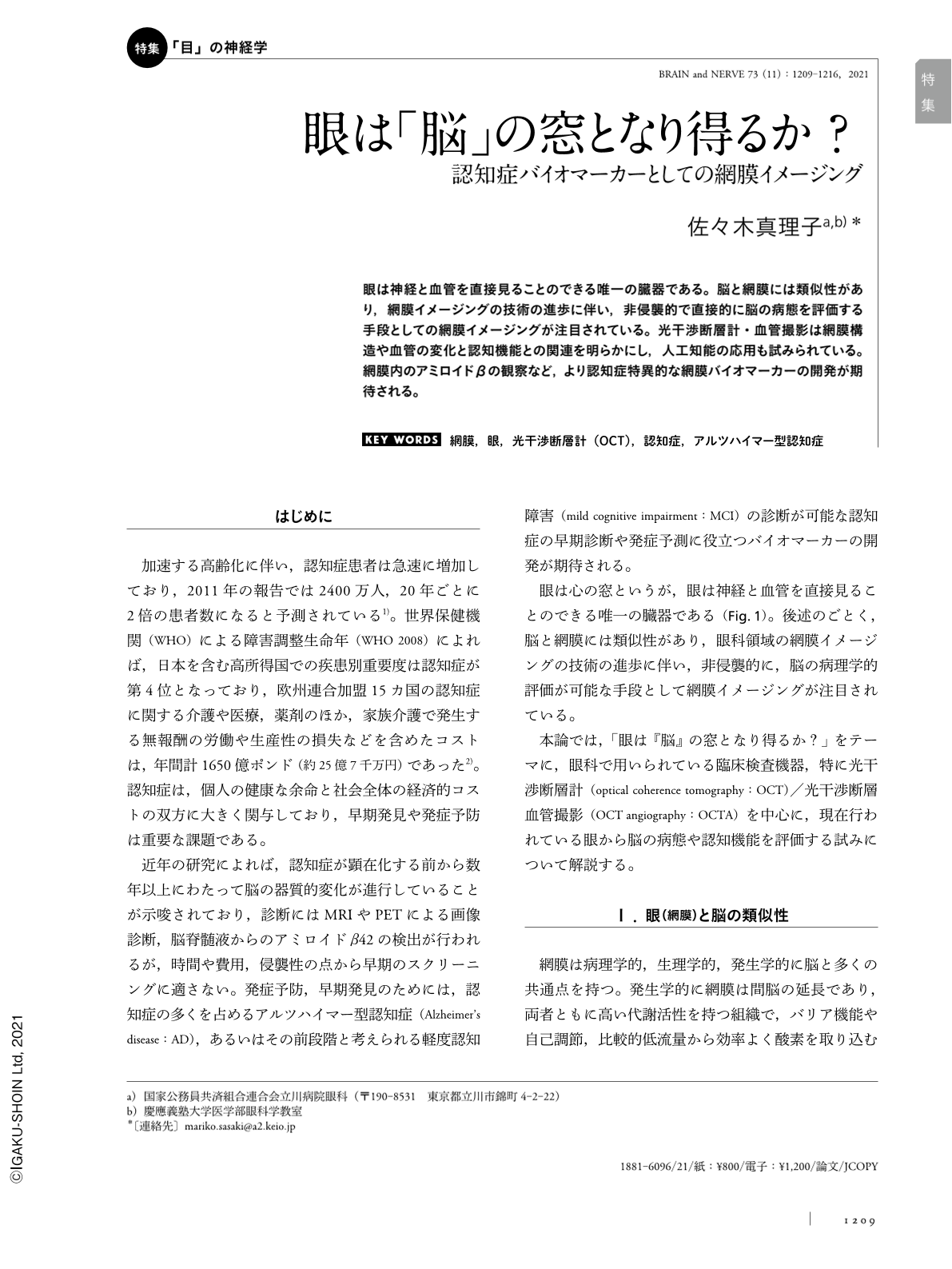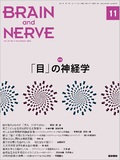Japanese
English
- 有料閲覧
- Abstract 文献概要
- 1ページ目 Look Inside
- 参考文献 Reference
眼は神経と血管を直接見ることのできる唯一の臓器である。脳と網膜には類似性があり,網膜イメージングの技術の進歩に伴い,非侵襲的で直接的に脳の病態を評価する手段としての網膜イメージングが注目されている。光干渉断層計・血管撮影は網膜構造や血管の変化と認知機能との関連を明らかにし,人工知能の応用も試みられている。網膜内のアミロイドβの観察など,より認知症特異的な網膜バイオマーカーの開発が期待される。
Abstract
Alzheimer's disease (AD) is a leading cause of dementia, and the current diagnostic methods of AD, such as positron emission tomography imaging, have a high cost and poor accessibility. Amyloidβ accumulates in the brain long before the symptomatic onset of AD, and can also be found in the inner retina. Anatomically and developmentally, the retina is an extension of the brain, and is the only part of the central nervous system that can be imaged non-invasively. Therefore, retinal imaging has potential as a potential biomarker for dementia. Previous studies have demonstrated that inner retinal thinning (measured using optical coherence tomography [OCT]) is associated with an increased risk of dementia, including AD. In addition, retinal vascular changes assessed using fundus photographs and OCT angiography were associated with dementia. We propose that artificial intelligence algorithms could be applied to process these retinal images and contribute to the automated interpretation of retinal images and screening for dementia. In addition, amyloidβ in the retina has been identified using hyperspectral imaging, a non-invasive retinal imaging, as a surrogate marker of brain amyloidβ. Retinal imaging may provide a novel biomarker and contribute to screening individuals at risk of dementia, monitoring disease progression, and assessing therapeutic efficacy.

Copyright © 2021, Igaku-Shoin Ltd. All rights reserved.


